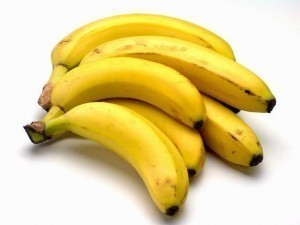Banana Sizes
A term used to refer to a herbaceous plant that belong to the family of Musacea and to the fruit that it produces, banana grows well in regions with tropical climate such as in the Southeast Asia. More than 107 countries grow this plant because the fruit is rich in vitamins and nutrients that are needed by our body. Aside from this, the other parts of the plant have various culinary uses. Moreover, the plant is also cultivated as ornaments. In order to cultivate this plant successfully, it is important to have ideas about the different banana sizes.
Musacea and to the fruit that it produces, banana grows well in regions with tropical climate such as in the Southeast Asia. More than 107 countries grow this plant because the fruit is rich in vitamins and nutrients that are needed by our body. Aside from this, the other parts of the plant have various culinary uses. Moreover, the plant is also cultivated as ornaments. In order to cultivate this plant successfully, it is important to have ideas about the different banana sizes.
The Sizes of Banana
The pseudostem plant grows from a vertical, swollen and short underground stem. It reaches the height of 20 feet to 25 feet. The leaves are arranged spirally with a width of around two feet and a length of 8.9 feet. The fruits grow in bunches. Each bunch has three to 20 tiers and each tier is consisted of at most 20 fruits. The weight of bunches is around 30 kilograms to 50 kilograms. The average weight of the fruit is 125 grams. The fruit is composed of 75 per cent water as well as 25 per cent dry matter.
The inner part and the skin of the fruit are edible. These can be eaten cooked or raw. The fruit has a skin or peel that protects it from bacteria and fungi. The fruit can also be dried. The banana fruit is usually classified as a green cooking fruit or as a dessert fruit. Most Southeast Asian countries export the fruit. Two of the dominant buyers of the fruit are the European Union and the United States.
Additional Information and Other Important Details
The banana fruit is rich in vitamin B6. Aside from these, the fruit is also known to have high content of potassium, vitamin C, magnesium, calcium and iron. The other nutrients that we can get from eating this fruit are thiamine, vitamin A, niacin, riboflavin as well as folate.
Bananas have high iron content, which is helpful in treating anemia because it regulates the production of blood hemoglobin. In addition to this, the fruit is recommended to patients who are at risk of stroke and high blood pressure. The fruit has tryptophan, a protein that can treat depression and mood swings. The other medical conditions that can be prevented or treated by including banana in the daily diet include morning sickness, seasonal affective disorder, ulcers as well as heartburn.





